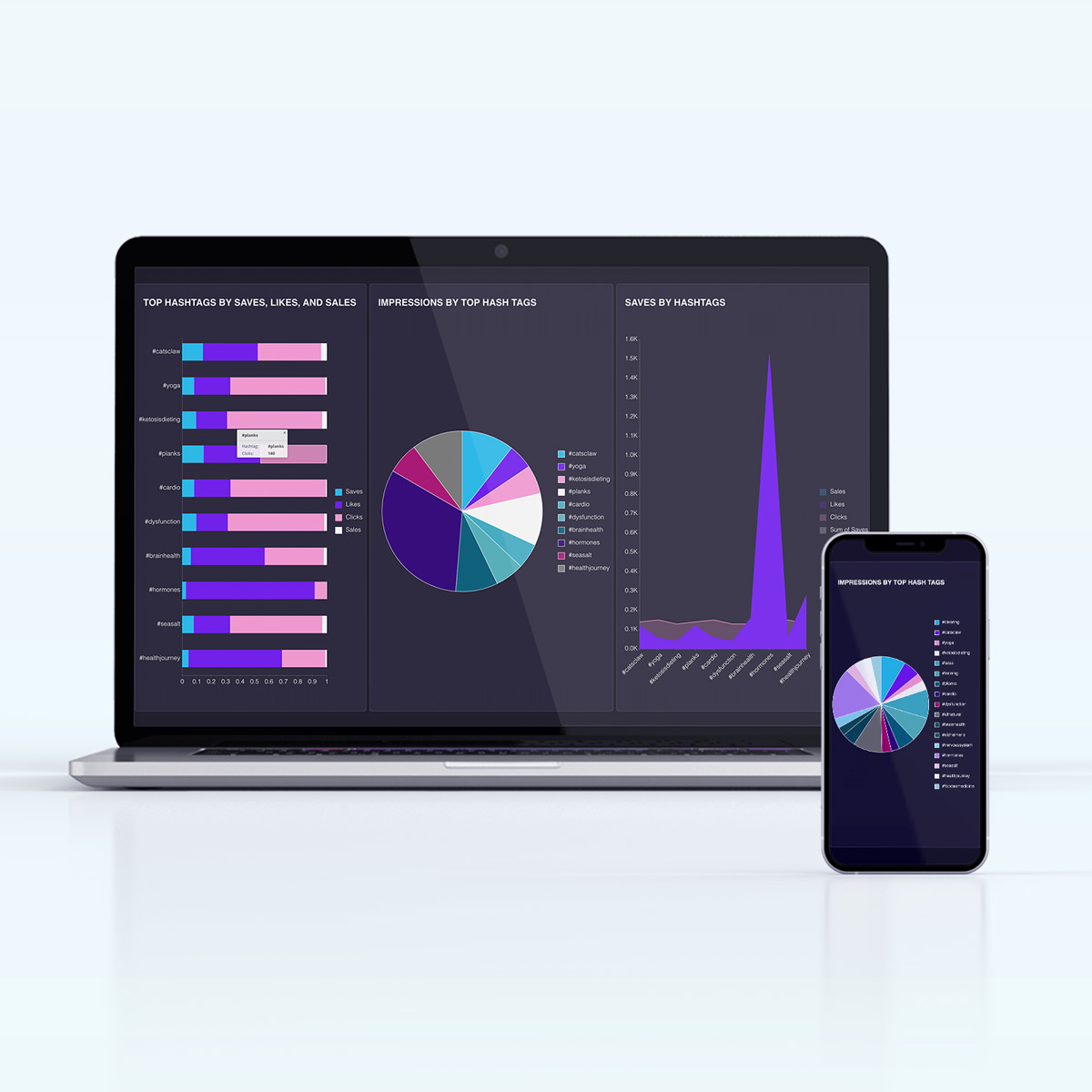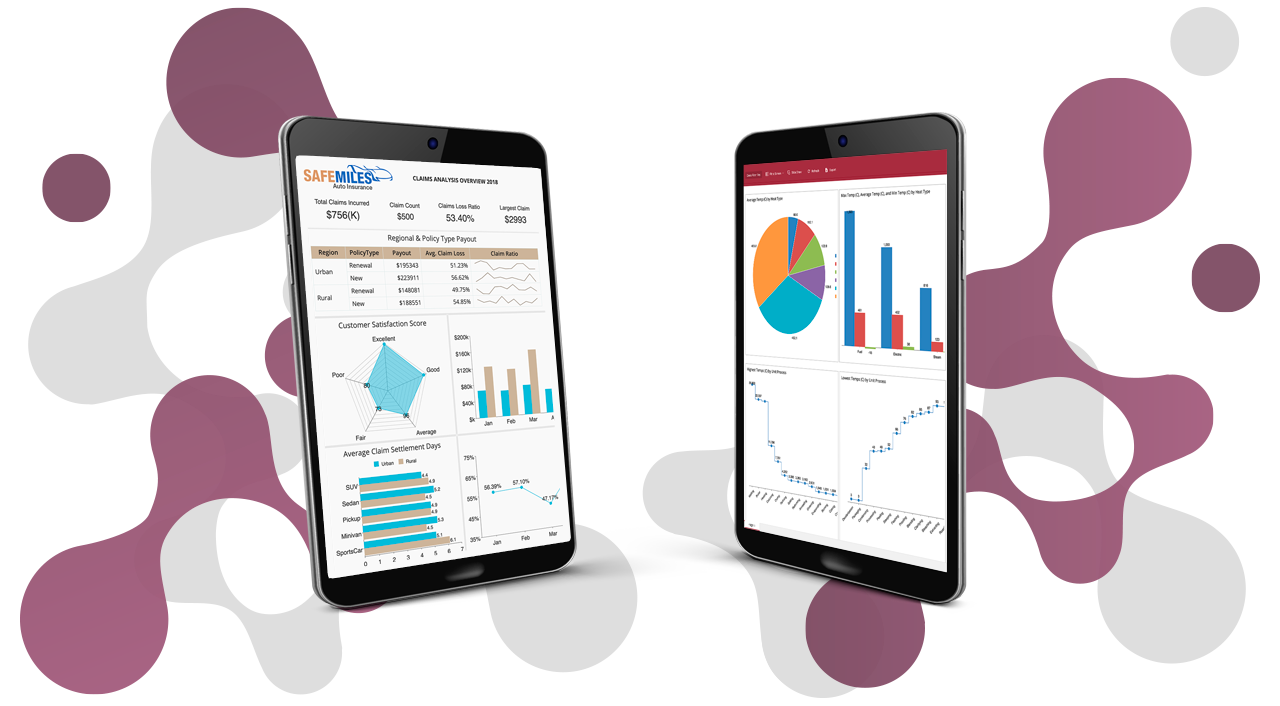Business intelligence tools sort through reams and reams of raw data to analyze, contextualize and, ultimately, find insights. But self-service BI is making these capabilities more accessible to a broader range of users—including employees working from home and hybrid workforces.
What is Self-service BI?
Self-service business intelligence (BI) is a BI feature that provides data analytics insights to every employee—even if they don't have a background in BI. Self-service empowers every end-user (technical and non-technical) to drill down on data and answer business questions quickly and easily. The user-friendly UI/UX of self-service BI allows the everyday user to become data-driven.
Embedded self-service BI tools can be integrated into existing applications and portals. With embedded self-service BI, end-users can easily visualize, analyze, and communicate the data that is fundamental to their role without logging in to another application.
Self-service BI has emerged as an alternative for organizations that have a small team of data analysts on staff (or no analysts). Any authorized business user can run queries, explore data sets and create their own reports. And they don’t need to call up the IT department for help, either. Even if an organization does have data analysts on staff, self-service BI frees up their time for more complex or higher-value queries.
While some employees are starting to return to the office, some will continue to work remotely for the foreseeable future or become part of a hybrid workforce.
In the era of post-pandemic, work-from-home (WFH) and work-from-anywhere (WFA), self-service BI tools can provide advanced analytics capabilities to any employee—even if they’re working from the kitchen table.

There are many benefits of embedding real-time, self-service BI, including:
- Data insights for all
- Improving data literacy
- Creating a data-driven culture
- Digging deeper into the data
- Reducing bottlenecks and saving IT resources
Traditional BI Tools vs. Self-service Tools
Traditional BI tools require business users to submit a request to the BI team or IT department, who will then extract and clean the data, run the query and produce a report or dashboard.
While this ensures data governance, it can be time-consuming, especially if the BI team is dealing with a number of different requests across lines of business.
And many organizations can’t afford to have a BI team—or even an IT team—on staff.
Self-service BI allows users to run their own queries and create their own reports, even if they don’t have a background in statistical analysis. And they don’t have to wait days (or weeks) to hear back on a query they’ve sent to the BI team—which is key, because the power of real-time data is lost if you have to wait days for analysis on your query.
The real-time nature of self-service BI empowers users at the very moment they need to make important decisions.
Embedded BI takes this a step further, by integrating data analytics and visualization software into existing business software and providing users with reporting and analytics in applications they already use—turning even the simplest applications into a platform for analyzing data. This also helps to minimize the learning curve and reduce pushback from employees, since it makes their job easier rather than adding to their workload.


Interactive Self-service Dashboard - Understanding Hashtag Conversions
Benefits of Self-service BI
Regardless of where they’re physically located, employees need high-quality data and real-time delivery. But they’re not data scientists or analysts; many feel overwhelmed trying to make sense of a complex spreadsheet. And they don’t have time to correlate data from multiple spreadsheets, charts, and other data sources to make decisions. Nor do they have time to wait days or weeks for the BI team to run their queries.
Self-service BI allows employees to dig deeper into real-time data, with the potential to discover insights, predict future outcomes, and make more informed decisions. It can also help them quickly identify any potential issues and adjust the course if necessary.
And because data preparation is automated (partially or completely), they have access to better data quality and data governance; in other words, there’s a single version of the truth.
Other Self-service BI Benefits Include:
Data Insights for All
Self-service BI is meant for all business users—not just data scientists. Look for a BI platform that offers a simple user interface (UI) and user experience (UX), so it’s not intimidating to employees who aren’t tech-savvy.
At the same time, however, you’ll want tools that appeal to both casual users (who may only be viewing data) as well as power users who want to create dashboards and reports.
Improves Data Literacy
If data is the new oil, then self-service BI allows everyone in the organization to benefit from its riches—not just the C-suite.
All employees, in any department or line of business, can benefit from data insights through personalized dashboards. And the more they use it, the more they’ll improve their data literacy (the ability to understand and interpret data).

Creates a Data-driven Culture
Improving data literacy helps to create a data-driven culture, which is even more critical during uncertain times. When dealing with volatile conditions—from supply chain disruptions to geopolitical unrest—a decision made yesterday may not be suitable for today.
Employees in a data-driven culture understand this and know how to respond.
Drill Deeper into Your Data
In a data-driven organization, employees can dig deeper into the numbers to find new or unique insights and identify potential trends. They’re no longer relying on their ‘gut’ to make decisions or on market reports that are also available to their competitors—giving them an edge in the market.
Reduces Bottlenecks and Saves IT Resources
When business users are empowered to conduct their own queries and analysis, this can help to reduce bottlenecks. IT staff or data analysts can focus their efforts on larger, more complex queries or technical requests, such as curating data sets, which speeds time to insights—and saves IT resources.
Security and Role-based Permissions
When it comes to self-service BI, one of the biggest challenges for organizations is ensuring security, privacy, and data governance. After all, not all business users have access to the same data, so a self-service model has to take this into account.
That’s where role-based permissions come into play, where permissions are assigned to employees based on their role—so sensitive or confidential information is only accessible to authorized users.
In other cases, certain data sets wouldn’t be relevant to certain lines of business, so role-based permissions also play a role in data governance. Admins can ensure the right data is being funneled to the appropriate user roles or user groups.
By using a platform that assigns permissions to ‘roles’ rather than ‘individuals,’ it’s easier to manage security, privacy and governance if an employee’s role changes—reducing the overall admin burden.
Use Cases for Self-service BI
Self-service BI can be used across lines of business to capitalize on analytic insights.
Here are just a few use cases for self-service BI:
- Business users: Line-of-business users can compose simple dashboards, answer their own business queries and create simple reports without the need for IT intervention.
- Executive users: Regardless of industry, the C-suite can gain insight into overall performance by drilling down into the data and using visualizations to make more informed decisions.
- Healthcare: Healthcare users can access, visualize, analyze and report on real-time healthcare data, providing insight-driven diagnosis and timely treatment decisions.
- Manufacturing: Manufacturing dashboards can help users route materials through the supply chain based on factors such as traffic and weather.
- Finance: In banking and finance, self-service BI can be used for credit scoring, churn management, identifying high-net customers, and preventing fraud.
- Retail: With data visualization BI tools for retail, employees can make better inventory decisions and predict future sales by taking into account changes in consumer behavior or market trends.
- Marketing: Marketers can use visualizations to understand consumer behavior and better target their marketing campaigns.
Getting the Most out of Self-service BI
By embedding self-service BI into applications that employees are already using, it cuts down on the cost of onboarding, training, and development—which is particularly helpful if those employees are working from home. But, just because it’s ‘self-service’ doesn’t mean it’s completely hands-off. While you’ll want a BI platform with an intuitive user interface, business users will still require training on how to run their own queries and create data visualizations, including reports and dashboards.
It’s also important to listen to your users to find out how self-service BI can best meet their needs. This can also help to mitigate any resistance, especially from those who like to rely on their intuition for decision-making. There should also be a data governance policy in place to manage data quality, access, and usage, and to ensure data security and privacy.
By finding the right platform and embedding self-service BI into applications your employees already use on a regular basis, employees have the power of advanced analytics at their fingertips—in the office, at home, or anywhere else.
Embed Turnkey Self-service Dashboards & Reports
Wyn is a 100% web-based embedded BI platform that provides greater insight into your data.
Wyn offers built-in tools for report and dashboard creation, multi-tendency, data governance, security integration, and automated document distribution. All with an easy-to-use interface for self-service BI.





























